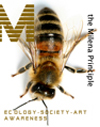
Past Present > >
![]()
2021:
The Veronica Suite
Contemporary Nomad Stories Inspired by Saint Veronica
Based on the Flémalle Panels (circa 1420-1425) by Robert Campin (also known as the Master of Flémalle, 1378–1445), The Veronica Suite revisits an age-old theme of suffering with renewed urgency.
Over the past decade, I have photographed people across Europe — refugees, migrants, colleagues, and friends — all connected by shared stories of migration and resilience. Everyone carries their own experience of hardship and endurance. This cycle of images draws inspiration from the powerful iconography of Saint Veronica, connecting historical and contemporary narratives of compassion and human endurance amid ongoing global struggles.
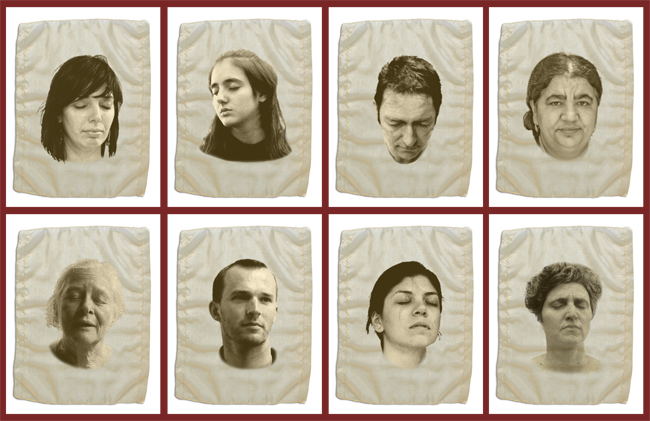
Sudarium 1 to 8
Beyond its Christian iconography, this painting reveals a timeless human truth: Veronica, moved by boundless compassion, reaches out to a condemned dissident. With a simple cloth, she wipes the blood and sweat from his face, capturing the imprint of his pain — a silent testament of solidarity. Without words, she whispers: “You are not alone. I see you. I hold you in my heart.”
In this quiet act, she steps away from the crowd, standing on the roadside where the condemned walks toward his fate. As a woman, she becomes the mother of all mothers, her heart beating stronger than the cruel hand of destiny. She embraces the suffering of the world, an eternal symbol of care, tenderness, and courage — a universal archetype of those who bear witness and nurture in the face of sorrow.
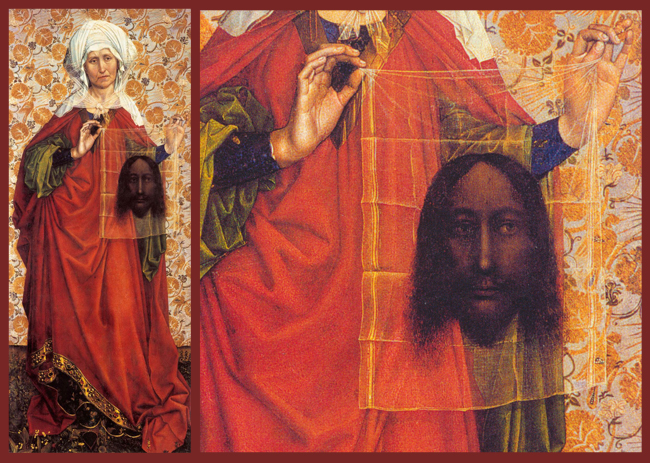
Volto Santo — The Veil of Veronica
The Veil of Veronica, or Sudarium (Latin for sweat cloth), is a sacred Christian relic believed to bear the miraculous imprint of Jesus’ face — an acheiropoieton, “made without human hands.”
According to tradition, at the Sixth Station of the Cross, Saint Veronica compassionately wiped Jesus’ bloodied face as He walked toward Calvary. His image was left upon her veil — a silent emblem of suffering, compassion, and hope.
This powerful symbol has inspired countless artworks and devotions throughout history, serving as a timeless reminder of mercy and human connection amid pain.
![]()
2020:
MOZAÏEK [Mijn naam is Vijd] CC Ter Vesten Beveren Belgium.
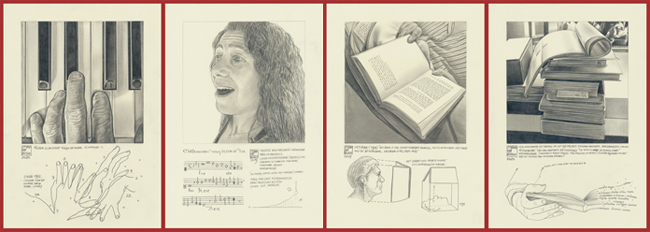
A multi disciplinairy project. Drawings - Photos - Texts - Soundscape - Photo/installation - Video ⋈ An artistic research. Location: Cortewalle castle Beveren 01.07 > 11.10.2020.
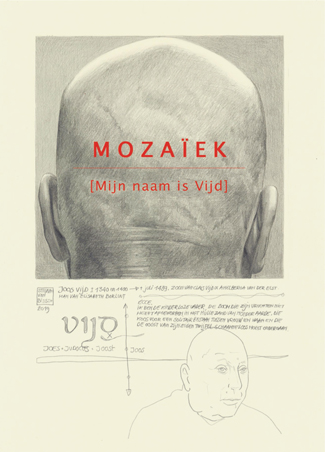
Above: pencil drawing by Stefaan van Biesen 2019.
In Response to the Jan Van Eyck Year 2020
At the invitation of CC Ter Vesten and Erfgoed Beveren, Stefaan van Biesen began a new project in the spring of 2020, inspired by the legacy of Jan Van Eyck.
While historical records provide some insight into Joos Vijd’s role, much about his intentions and ambitions remains open to interpretation. Scholars have debated various perspectives, yet it seems likely that Joos Vijd was more than just the patron and financier of the Ghent Altarpiece. He appears to have had a deep connection with the artistic circles from which the Van Eyck brothers drew their inspiration.
The fact that Philip the Good, considering the scale and importance of the Ghent Altarpiece, agreed to “lend” Jan Van Eyck—who was also a key figure in the splendor of the Burgundian Court—to work on Vijd’s commission speaks volumes. It highlights the respect and affection Philip held for Joos Vijd, underscoring his significance beyond mere patronage.
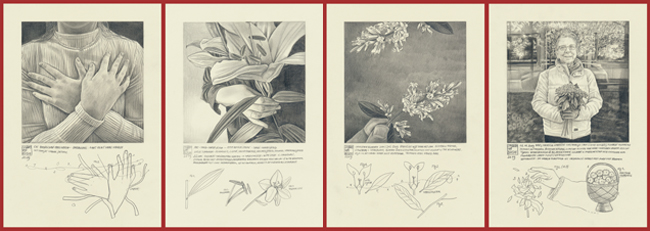
About MOSAIC [My name is Vijd]
Stefaan van Biesen’s project and research, titled MOSAIC [My name is Vijd], was launched as an exhibition running from July 1 to October 11, 2020. The exhibition is hosted at Castle Cortewalle, the former residence of Joos Vijd. Due to COVID-19 restrictions, the official opening was postponed to a later, yet-to-be-announced date and is accessible online via the CC Ter Vesten website.
This multidisciplinary project features around 80 drawings and notes, along with video and photo installations, soundscapes, texts, stories, and publications. [Here is an overview of the drawings].
At its core, MOSAIC is a search for Joos Vijd: exploring the symbolism and themes embedded in the Ghent Altarpiece, viewed through a contemporary lens. It centers on Vijd himself—a member of a Flemish patrician family portrayed alongside his wife, Isabella Borluut, on the Altarpiece’s exterior panels.
The project examines how these historical elements resonate today, questioning which connections remain relevant and timeless. It probes whether the social and cultural context of Vijd’s time still holds meaning in our current human, social, and intercultural relationships.
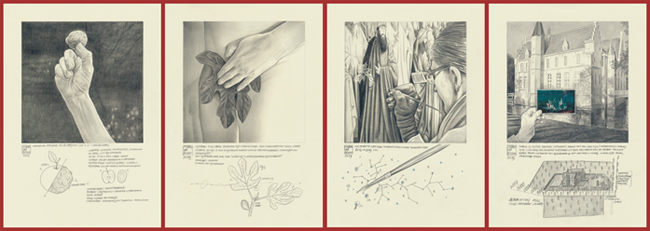
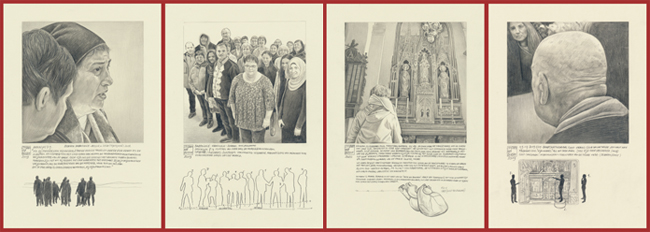
Stefaan van Biesen – Artist Statement
Stefaan van Biesen is internationally recognized as a contemporary visual artist whose work focuses not only on the finished image but also on the creative journey that leads to it. Each image forms a step within a broader ongoing inquiry. Central themes in his work include religion, society, and nature. In the oeuvre of Jan Van Eyck, van Biesen discovers a philosophical undertone that remains remarkably relevant today.
Van Biesen approaches the Burgundian master’s work through his own drawings, often inspired by contemporary photographs in which figures, poses, and motifs echo the masterpiece. These images—frequently the posture of hands—function as archetypes, recontextualized within today’s world. His detailed drawings evoke the delicate intricacy of medieval miniatures.
For van Biesen, drawing is a meditative act. He focuses intently on every line, marvels at their interplay, and experiences a profound sense of wonder as the finished image emerges from loose strokes and forms.
Accompanying each drawing are notes—thoughts and ideas that arise during the process, linking historical symbolism to contemporary reflection. This fusion creates an almost mystical experience. Drawing becomes not just a creative tool but a practice of insight and discovery that deeply informs his research. Through the act of drawing, the artist perceives the world with heightened precision and from multiple perspectives, gaining understanding through the very act of making.
— Source: Christl Van den Broucke, CC Ter Vesten
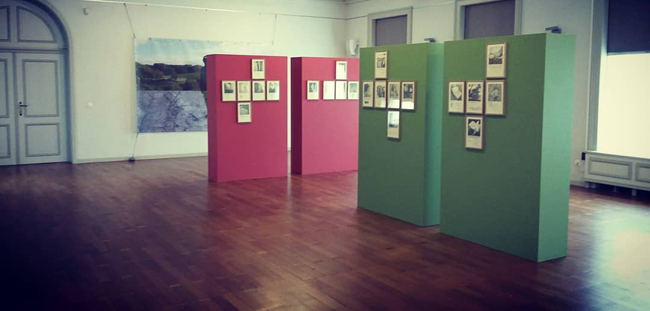
![]()
Part 2: Photo Installation – The Wide Landscape
MOZAÏEK [My Name is Vijd]
CC Ter Vesten, Beveren, Belgium | July 1 – October 11, 2020
A multidisciplinary project
This installation features two sets of 16 photographs, taken during walks throughout the municipality of Beveren between 2016 and 2020. The images are carefully selected from a collection of over 150 photos, which are also presented digitally elsewhere in the exhibition.
These two suitcase-style installations evoke the pictorial atmosphere of the landscapes depicted in the Ghent Altarpiece. Using photography—a popular medium now deeply embedded in our contemporary digital culture—the natural world of this iconic medieval painting is explored and compared with our present environment. The installation invites viewers to consider how the painting’s landscapes simultaneously capture the everyday and hint at the metaphysical.
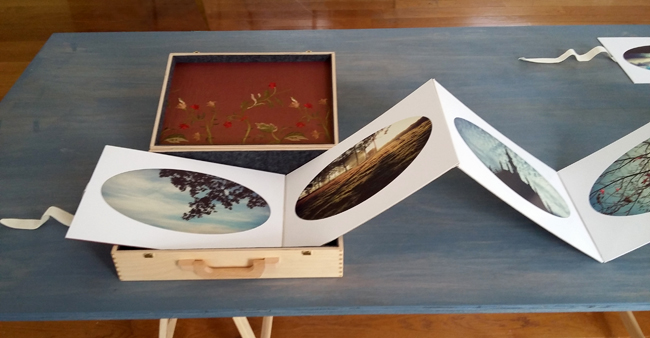
The photographs present themselves as filtered fragments of everyday life—quiet, attentive glimpses into a world in constant motion. They are subdued pages from a visual diary, silent landscapes that evoke a melancholic worldview: a tender appreciation for the beauty found in stillness and quiet moments.
These everyday scenes reveal themselves as lived landscapes of emotion and meaning—a shifting metamorphosis from one moment to the next. The viewer becomes the chronicler of their own thoughts, reflected in what they see. Here, camera and photographer merge in a timeless flow. It is life that breathes life into art, and art that returns, warmly, to life.
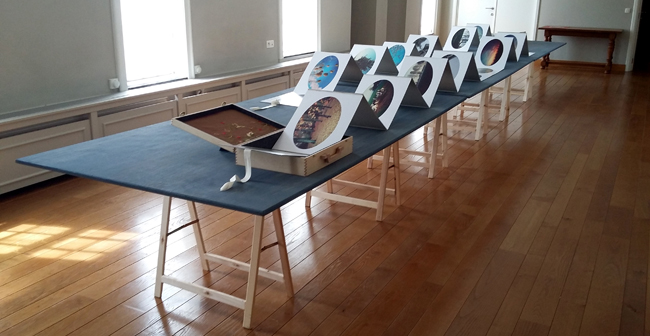
View installation Cortewalle castle Beveren 2020.
![]()
(V)ADER Wall installation | integration with drawings at Cortewalle Castle Beveren Belgium 2021.
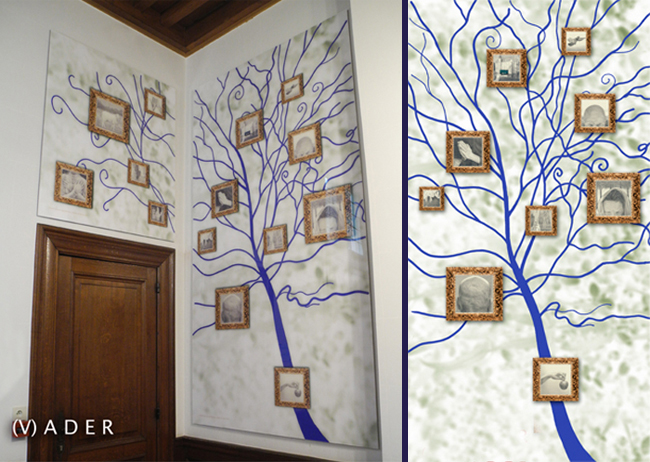
( V ) A D E R Wall installation/integration with drawings at Cortewalle Castle Beveren Belgium 2021.
Joos Vijd who lived at Cortewalle ordered the Ghent Altarpiece [1432] from Jan Van Eyck. This work is a memorial to him and his wife Isabella Borluut.
Wall installation (V)ADER [Father/Vein] 2021. A Spin off the exhibition Mozaïek [Mijn naam is Vijd]. CC Ter Vesten Beveren Belgium 01.07 > 11.10.2020. A multi disciplinairy project.
![]()
5 Stories publication of stories where the Ghent Altarpiece finds a place in everyday life.
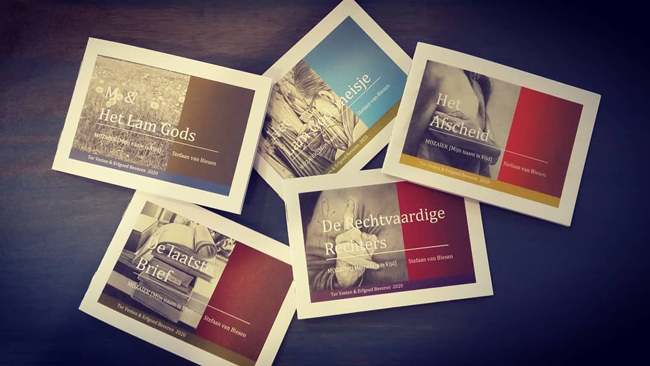
![]()
Son & Heir
A reconstruction of the remnants of a day in 1952, created for the Flow Lines project by Deirdre McLeod, University of Edinburgh, Scotland, June 2020.
In the photo on the left, taken in 1952, my father stands in a pool of water—a mysterious act on a quiet Sunday afternoon, one year before I was born. I have often wondered about the meaning behind this moment, yet found no answers.
Reconstructing this scene became a way to follow in my father’s footsteps—a gesture of connection, a thread in a living family tradition.
As Gustav Mahler once said, “Tradition is tending the flame, not worshiping the ashes.”
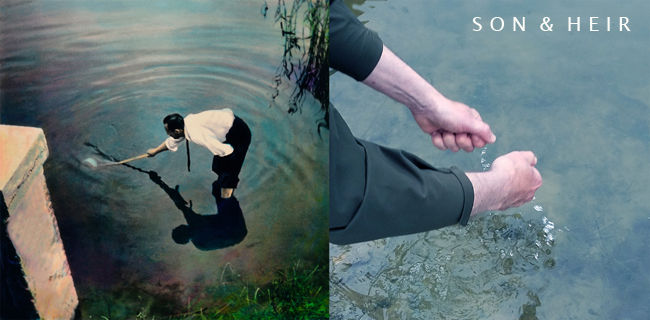
Flow Lines
In human geography, flow lines trace the movement of people—commuters, migrants—traveling from one place to another. In physical geography, flow lines on oceanographic maps reveal how ocean currents circulate around the globe.
On your own, and keeping a self-isolating distance of at least two meters from others, make your way to a nearby sea or ocean. If the sea is far, visit a local stream, river, or canal—as long as it eventually leads to the sea.
Remove your shoes and roll up your trousers. Stand in the water. Say goodbye to the waves gently lapping around your ankles. Wish them well as they travel to distant shores, connecting you to others who may be paddling there. Place your hand in the water and shake hands with all those linked to you by these flowing waters—people you cannot currently visit by land or air.
![]()
Deirdre McLeod: the project is called 'Flow Lines' and is an artistic response, of sorts, to current circumstances. It aims to explore the more solitary conditions that we find ourselves in, and ways in which we might connect. Since the emergence of the Coronavirus, and particularly since lockdown, we have moved differently within public space. Time outside has become precious and, often, solitary and we are still unable to visit, and be physically close to, those with whom we do not live.
At the same time, the pandemic has highlighted the importance of urban public space to individuals and communities. I’m creating a set of six mini-performance pieces for individuals to do on their own. Each piece is based on gestures that I’ve observed people making or doing over the past few months here in Edinburgh.
The performance involves standing (safely) in flowing water. I'm keen to involve artists across the UK and internationally in this project.
You can find more information about the project at:
https://www.artwalkporty.co.uk/2020/deirdremacleod.html
![]()
2019 :
The Offering of the Heart | The Book of the Love Heart in Love
An allegorical novel by Duke René d'Anjou [1409-1480]
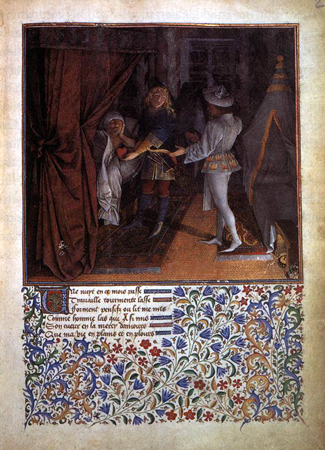
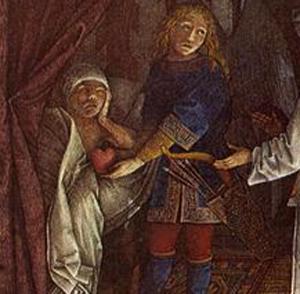
Miniature from the Book of the Loving Heart of Love
Depicting Love presenting Desire with the heart of the ailing king.
Attributed to Barthélemy d’Eyck (active c. 1440–1470), a prominent Netherlandish painter and illuminator known for his intricate miniatures and detailed religious works.
Barthélemy d’Eyck was part of the flourishing Northern Renaissance and is recognized for blending delicate Gothic elegance with emerging Renaissance naturalism. His work is characterized by exquisite attention to detail, vibrant colors, and expressive figures that convey deep emotional and symbolic meaning. This miniature exemplifies his ability to narrate complex allegorical themes, such as love and desire, through captivating visual storytelling.
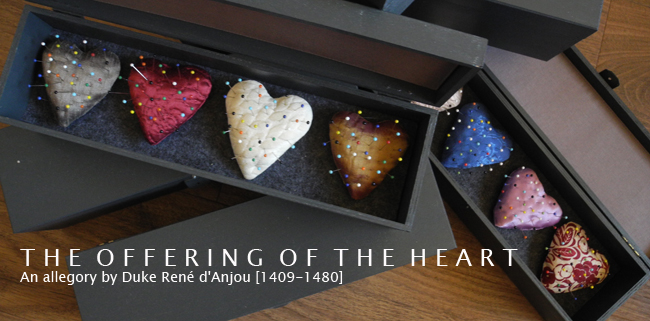
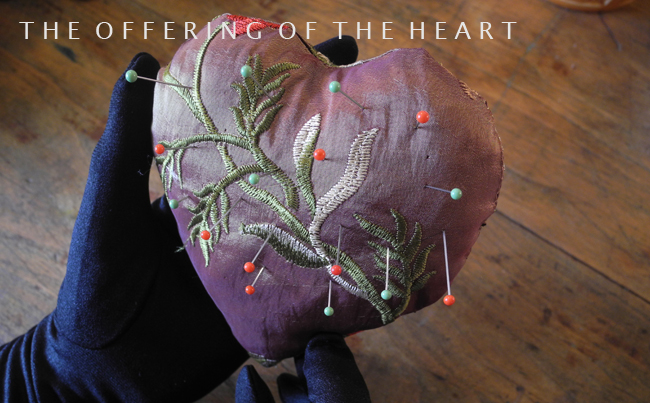
![]()
2004:
En écoutant du Schumann | La Musique russe.
Art project 'Melancholia', S & H De Buck & university of Ghent Belgium 2000. Based on a dispute between the two famous Belgium Fin de Siècle painters: Fernand Khnopff and James Ensor. Ensor accused Khnopff of plagiarism.

Performance Inspired by James Ensor and Fernand Khnopff
This performance draws on the artistic relationship and rivalry between two iconic Belgian painters, James Ensor (1860–1949) and Fernand Khnopff (1858–1921). Both artists were fellow students at the Brussels Academy, yet their careers were marked by a famous and intense polemic sparked by Khnopff’s painting Listening to Music by Schumann, exhibited the year it was completed.
The controversy arose because Khnopff’s work appeared to be influenced by Ensor’s earlier painting La Musique russe (Russian Music, 1881). This influence sparked a heated debate between the two artists, reflecting their very different artistic visions and temperaments.
Listening to Music by Schumann was later acquired on October 5, 1945, at the Henri La Fontaine auction held at the Georges Giroux Gallery in Brussels, and now forms part of the Royal Museums of Fine Arts of Belgium’s collection.
Through this performance, the complex dialogue—both collaborative and confrontational—between Ensor and Khnopff is brought to life, exploring themes of inspiration, rivalry, and the nature of artistic influence in late 19th-century Belgium.
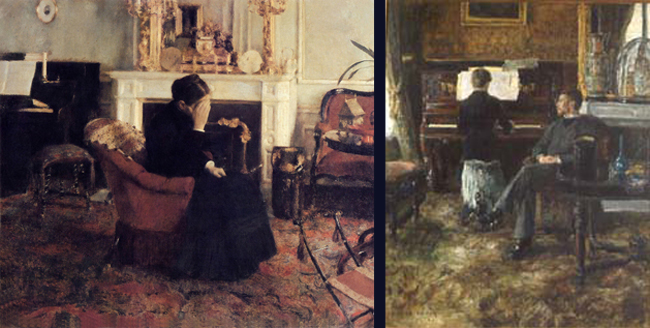
En écoutant du Schumann, Fernand Khnopff 1883 > La Musique russe, James Ensor 1881.
![]()
2003-2008:
Studiolo: Skin, must learn how to breathe | Installation |a reconstruction.
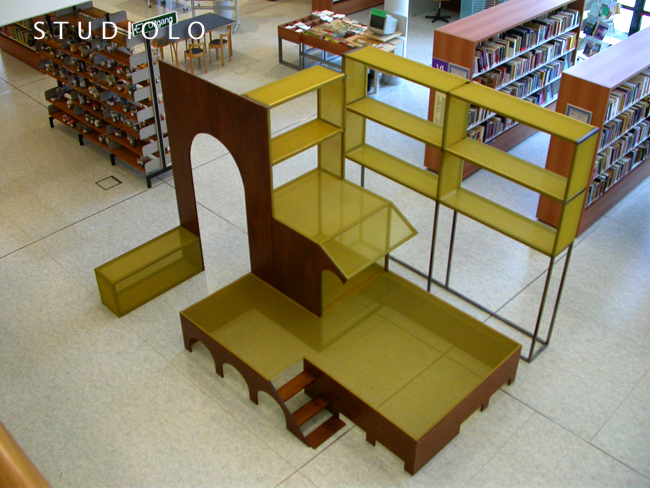
Public library Zwijndrecht Belgium 2005.
The world of the recluse. Stefaan van Biesen's philosophical path.
Many will have looked at the painting “San Girolamo nello studio” by Antonello da Messina in the London National Gallery with certain amazement and questioning eyes. San Girolamo is better known as Hieronymus. The Saint is mostly represented as a hermit who lives in poor circumstances. Let’s think about the famous painting of Jeroen Bosch in the Museum of Fine Arts in Ghent, Belgium. We see the recluse who has thrown himself in front of the crucifix, only dressed in his undergarment. Behind him, a serene and most beautiful landscape unfolds, to which the hermit pays no attention.
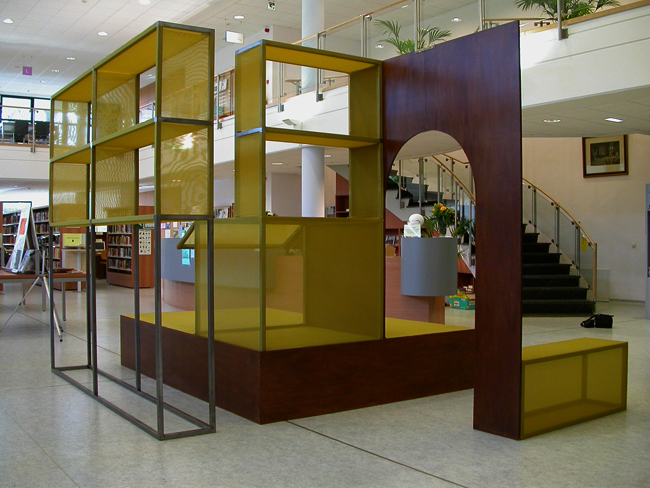
San Girolamo nello Studio [1474–1475] by Antonello da Messina. ©National Gallery London UK.
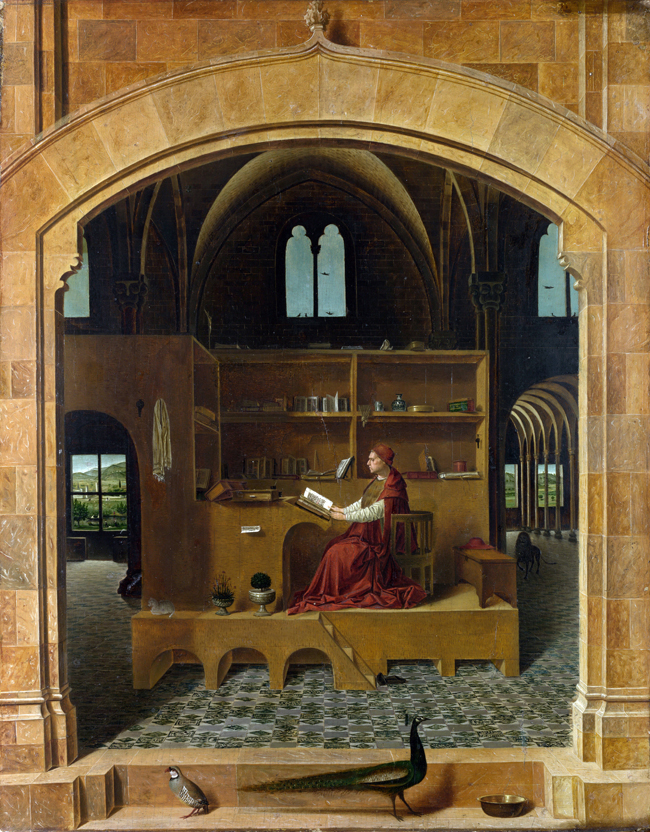
The painting is recorded in a Venetian collection in 1529 as by Antonello, Van Eyck or Memling. Antonello da Messina may have painted it when in Venice in the 1470s. His style was much influenced by Netherlandish painting seen in the detailed treatment of objects such as the hanging towel and the view through the window. The 4th-century Saint Jerome was one of the four Fathers of the Church, and is often represented in the Renaissance. He was famous for the Vulgate (the translation of the Bible into Latin) and is often depicted in his study. A painting of Saint Jerome, thought to be by Jan van Eyck, is known to have been in Naples in 1456 and Antonello may have seen it. He certainly worked in Naples as well as his native Sicily.
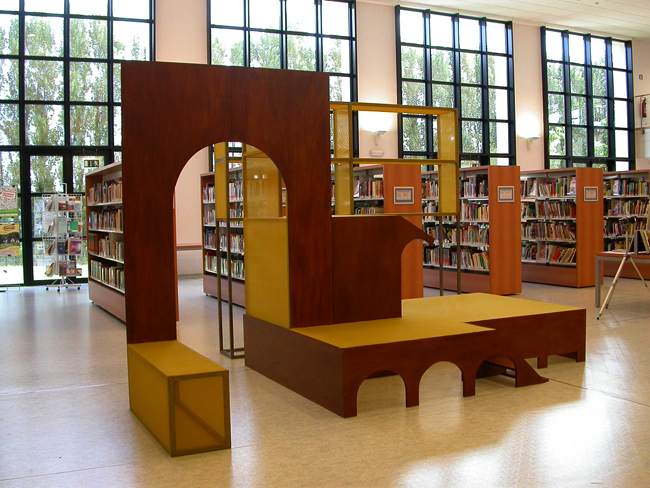
Public library Zwijndrecht Belgium 2005.
Antonella da Messina pictures the recluse in his study, an open construction in which the church father withdraws. His wooden construction is part of a bigger picture, an imaginary, gothic room which could refer to a church as well as to a palazzo. Slender pillars and vistas with a view on the landscape, only meant for the viewer, not for the character who has withdrawn in that space. He has retired voluntarily in a firmly structured studio with only walls. The studio is somewhat elevated above the world, it is like a stage. The learned church father is reading a book and is surrounded by several objects. He observes the world through educational material, not through direct observation. He observes the world in which he has retired. Let’s not forget that the man is a monk and a scholar who is responsible for the Latin standard version of the bible, the Vulgate. His cardinalate was assigned posthumously, therefore the red mantle and cardinal’s hat, attributes with which he is mostly represented.
Text by Daan Rau [published in Openbaar Kunstbezit 2007].
Skin was show at 1. 'Skin, must learn how to Breathe, CC De Werft Geel [2004] > 2. Public Library Zwijdrecht Belgium [2005] > 3. ' Rewind' [curated by Filip Van de Velde, SMAK Ghent], Vierkante Zaal KASK Sint-Niklaas Belgium [2008].
![]()
The philosophical path
Many artists, scientists and philosophers recognize themselves and their own situation in this state of retiring disposition from the world. Stefaan van Biesen shares this feeling. He wants to complete an installation from this fascinating painting. In his preparatory file he writes the following about the scholar: “The trip he makes is a mental voyage, as if he can transfer himself through thoughts to other, still unknown places. The studio is a projection of his thinking.”
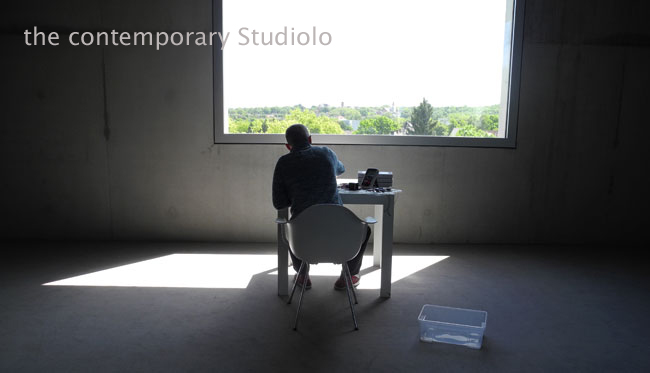
![]()
1994 - 2019:
Obstacle | Passage | Obstacle. Installation |a reconstruction.
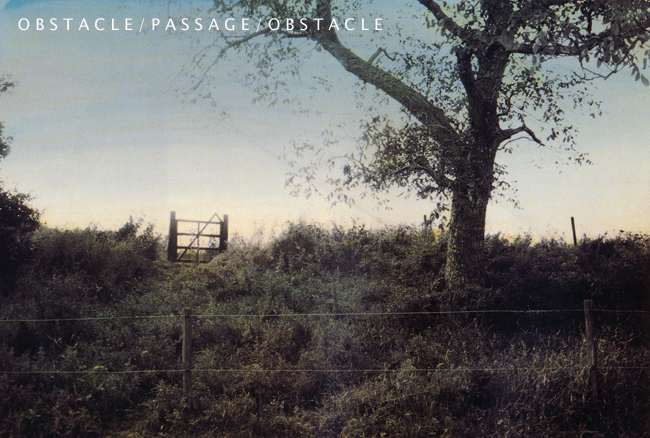
The photo above shows the installation created during the art project 'Speelhoven' in Aarschot, Belgium (1994–1997). It was published in the book Buiten & Binnen (Outside & Inside), Visions on and by the Actual Landscape (1998) by author and art historian Johan Pas.
The installation was placed in a location strikingly reminiscent of the landscape depicted in Hieronymus Bosch’s masterpiece The Prodigal Son (1516). This close visual and thematic connection was the main reason for situating the work here.
The Prodigal Son (1516) is part of the collection at the Museum Boijmans Van Beuningen in Rotterdam, the Netherlands.
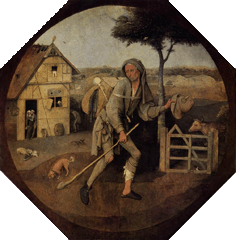
Sculpture / Permanent Installation
Birth Park, Community of Zwijndrecht, Belgium – September 2018
This installation/reconstruction features a symbolic gate representing renewal, transformation, and the mental rebirth that marks the start of a new life phase. It reflects the journey of the wanderer, nomad, or refugee striving to find a place called ‘home.’
In his work, Stefaan van Biesen explores the interplay between presence and past, body and mind, culture and nature. Through images, drawings, videos, and performances, he offers a unique perspective on humanity, the natural world, and social realities.

[Obstacle/Passage/Obstacle]. Integration Geboortepark Zwijndrecht Belgium September 2018.
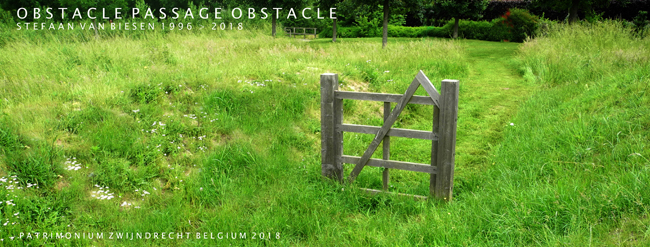
[Obstacle/Passage/Obstacle]: 'Speelhoven' Aarschot Belgium 1996 > 'Artificial Landscape' [Betoverd Bos] Schuurlo Sint-Maria Aalter, Belgium. [curator: Angelique Campens] > 'How Long Is Now?' Biscainhos museum Braga Portugal 2010 > As a permanent work in the public space: Geboortepark [Birth Park] at Zwijndrecht Belgium 2018.
![]()
2002 :
World kitchen | Breugel & today' Herman Teirlinckhuis Beersel Belgium 2002.
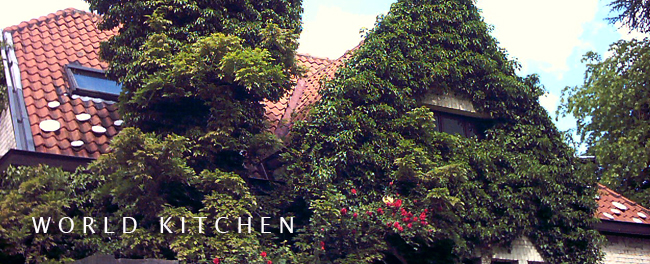
Art Project: [Breugel en Vandaag]
In 2002, several artists were invited to create a tribute to Pieter Bruegel the Elder (1525–1569) at the Herman Teirlinckhuis in Beersel, Belgium. This historic house is located in the very region where Bruegel once lived and worked, making it a fitting setting to honor his enduring legacy.
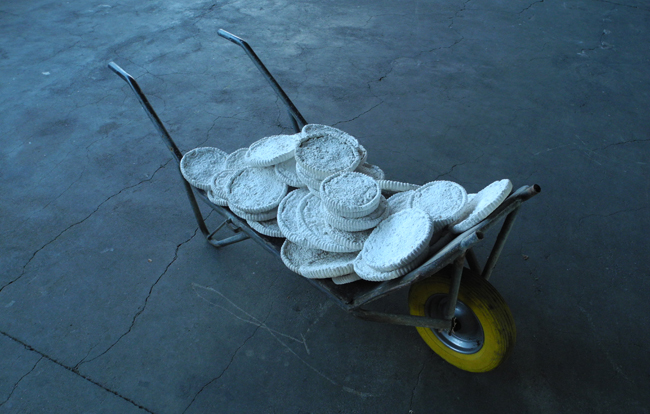
Fragments from Pieter Bruegel’s Paintings ‘Spreuken’ and ‘Boerenbruiloft’
Pieter Bruegel the Elder, a master of 16th-century Flemish painting, is renowned for his vivid depictions of peasant life and allegorical scenes rich in symbolism. Two of his most iconic works, “Spreuken” (The Proverbs) and “Boerenbruiloft” (The Peasant Wedding), offer fascinating glimpses into the social fabric and cultural values of his time.
‘Spreuken’ (The Proverbs)
Painted in 1559, Spreuken is a complex and detailed visual catalogue of over 100 Flemish proverbs and idiomatic expressions. The painting acts as a moral and social commentary, depicting human folly and wisdom through small vignettes scattered across a rural landscape. Each fragment illustrates a proverb, combining humor, satire, and insight into everyday human behavior. This work invites the viewer to decode its scenes, revealing timeless lessons about human nature that remain relevant today.
‘Boerenbruiloft’ (The Peasant Wedding)
Created around 1567, Boerenbruiloft captures the lively atmosphere of a rural wedding feast, showcasing Bruegel’s unparalleled ability to portray communal life with warmth and detail. The painting’s fragments—guests eating, musicians playing, and various wedding customs—invite us to step into 16th-century peasant culture. Through his careful observation, Bruegel elevates everyday life to the level of grand human drama, emphasizing themes of community, tradition, and celebration.
Both paintings reveal Bruegel’s deep engagement with the world around him, blending realism with allegory. The fragments from these masterpieces serve as powerful reminders of the richness and complexity of human experience, bridging past and present.
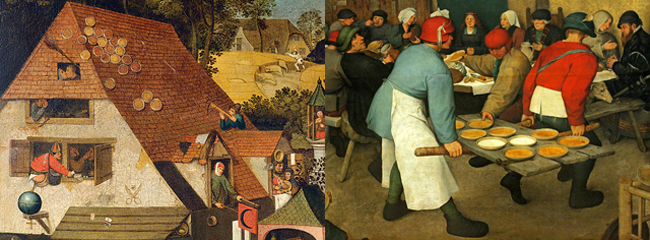

[World Kitchen] — Breugel & Today
Rooftop installation, Herman Teirlinckhuis, Beersel, 2002
This installation features 60 rice pies made from plaster, inspired by Pieter Bruegel’s painting of Flemish proverbs, with a particular focus on the saying: “There, the roofs are covered with flans.” This expression refers to people living in wealth and abundance.
The artwork reflects on luxury and excess amid an unevenly divided world—a timeless and universal issue that remains deeply relevant today. By placing these symbolic rice pies atop the Herman Teirlinckhuis, located in the region once inhabited by Bruegel himself, the piece creates a dialogue between historical imagery and contemporary social realities.
![]()
1998 :
Wild Man Variations | video performance. Corpus CC Ter Vesten Beveren Belgium 1998.
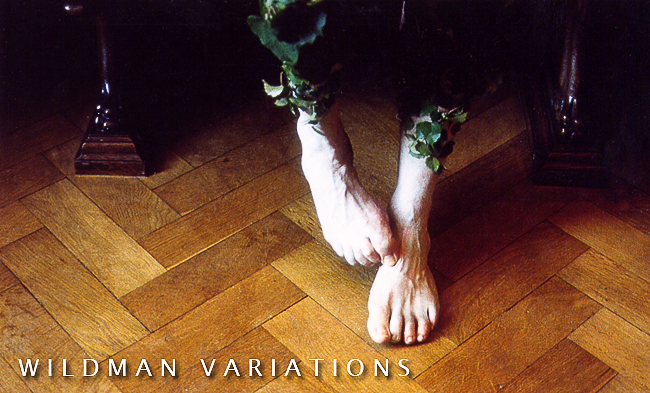
Wildman Variations
A video performance inspired by pagan “wildman” imagery and wooden carvings found in the historic house chapel of Castle Cortewalle, Beveren, Belgium. Part of the art project Corpus at CC Ter Vesten (1998).
The wildman is a mythical figure rooted in medieval European art and literature—akin to the satyrs or fauns of classical mythology, or Silvanus, the Roman god of the woods.
This work explores the tension between Nature and Culture—a longing to become one with nature, contrasted with the cultural constructs that often separate us from it. Our understanding of “nature” is always shaped by cultural perspectives; it is a filtered, interpreted view of the environment around us.
Perhaps this is why “nature” is such a difficult concept to define. Too often, we forget that we ourselves are nature. We place ourselves outside of it, as detached observers, having lost or denied the profound connection that lies at our very core.
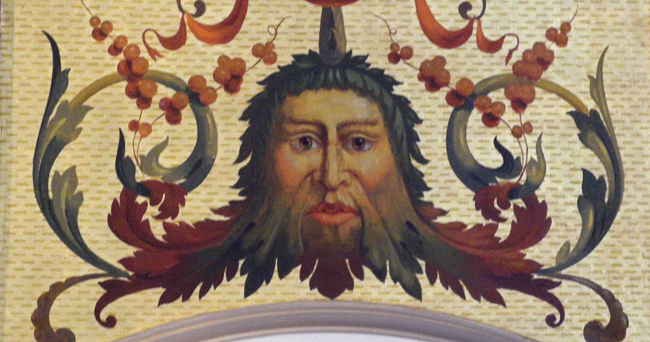
Photo: one of the several wildman paintings in the chapel of Cortewalle Castle in Beveren. A remarkable combination of Christian and pagan representations.
![]()
1999-2020:
Friedrich Walks. Walks in Europe [since 1999]. Spaziergangwissenschaft.
Photographs taken during several walks in Europe as an hommage to Caspar David Friedrich.

Caspar David Friedrich (1774–1840) was a seminal German Romantic landscape painter, widely regarded as the most important artist of his generation in Germany. He is best known for his mid-period allegorical landscapes, which often feature contemplative figures silhouetted against night skies, morning mists, barren trees, or Gothic and megalithic ruins.
Friedrich’s primary artistic focus was the contemplation of nature. His symbolic and anti-classical works aim to evoke a deeply subjective and emotional response to the natural world. His paintings commonly depict human figures diminished in scale within vast landscapes, a compositional choice that, according to art historian Christopher John Murray, guides "the viewer's gaze towards their metaphysical dimension."

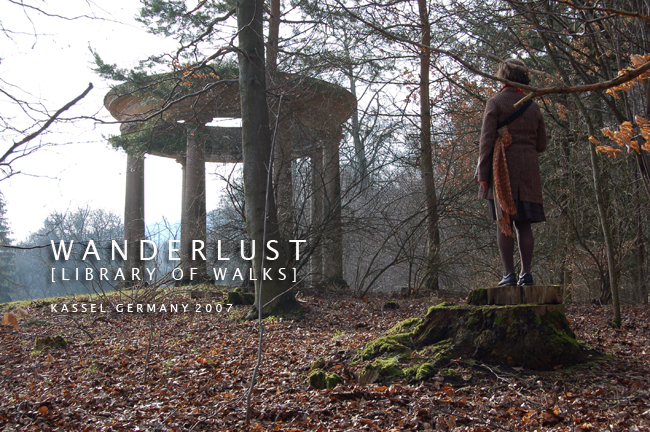
Photo: Annemie Mestdagh at Wilhelmshöhe Apollo Temple Kassel Germany 2007.
![]()
1992:
My load is undefined | a two day walk 1992.
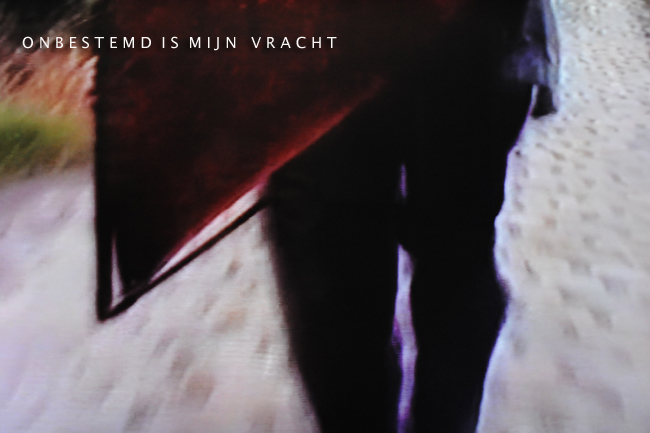
My Load is Undefined 1992
My very first walk marking the beginning of my artistic practice: a documented two-day walk in Melsele, Belgium, 1992. Prop by Stefaan van Biesen
Fragments of the video.
![]()
